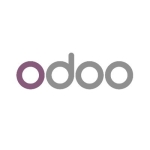Principally, the solution is used for financial issues like accounting, payroll, or inventory.
The on-premise is very similar to the cloud version.
It's robust and strong for sizeable enterprises that deal with big numbers daily and monthly. We have tried it with maybe 10,000, 20,000 alternate sections daily.
The solution has a good structure. You can personalize it and configure it.
If you have expertise with the product or Oracle, you will find the setup to be straightforward.
It's a very complete product.
Technical support is useful.
The solution is very expensive. The price is high for smaller organizations. Enterprises might find it to be okay.
It's very dependent on integration with other products, especially with Oracle, for an OIC solution.
We've used the solution for 15 years.
The solution is stable. There are no bugs or glitches, and it doesn't crash or freeze. It's reliable.
The product is very scalable. With the Oracle solution, there are multiple model options from production, to manufacturing, to transport. It's great for warehouse administration and warehouse management. It can scale to meet the needs of large operations.
Oracle support is pretty basic. They constantly make patches, improve software security and stability problems, and add new solutions. It's good overall, the support we get directly from Oracle.
It's application-specific in terms of setup. If you don't have the expertise, it's very, very hard. It's necessary to have this experience with this software. If you don't have the experience, maybe will be very hard to implement. If you do, it won't be that bad.
You don't need a huge team for maintenance. It's very stable throughout the year.
It's a pricey product. However, it is meant more for enterprises.
We are Oracle partners.
While we are partners, we've dealt with all different versions. The latest is 12.2.7. We have clients that have an on-premise deployment, and we can help them move to the cloud.
It's important to find a good innovation partner, especially if there are plans to move to the cloud. Maybe the lifetime of E-Business Suite is maybe ten years for maximum. That's something to consider if you are coming up to that date.
Overall, it's a very good solution. I'd rate it ten out of ten.















